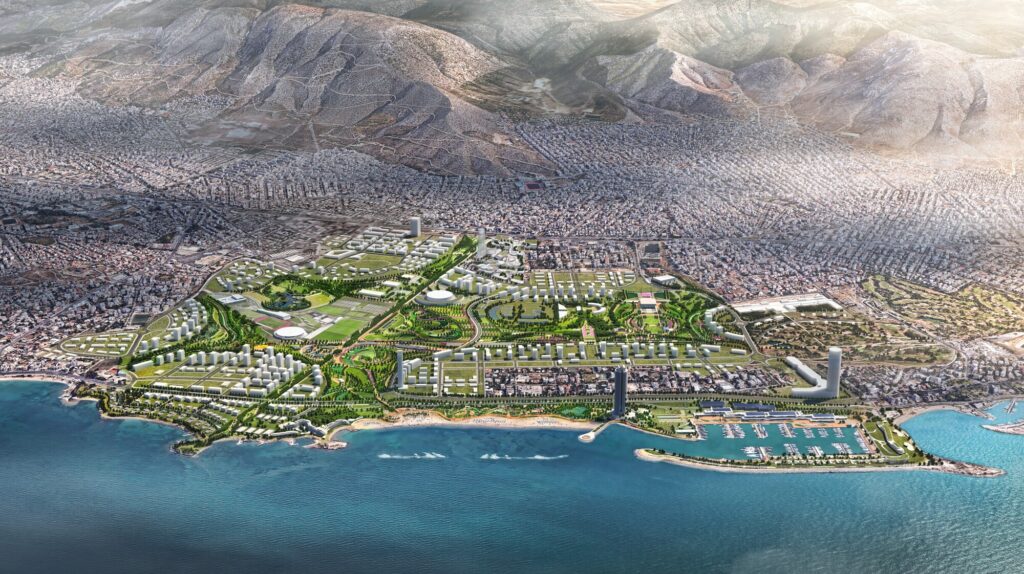The Athens International Airport was decommissioned in 2001, leading to two decades of work for the local government to establish funding and a governance mechanism to transform the 600 acres of unused space into Europe’s largest coastal park. The site has a layered history, from prehistoric settlements to the construction of the airport in the 20th century and the site being used for as an Olympic venue in 2004. Architecture office Sasaki is leading the design to transform the site again and create the Ellinikon Metropolitan Park, a restorative landscape and climate-positive design that will serve as a park, playground, and cultural center for the city of Athens. Developers are planning to break ground early next year.
The site’s history represents one of the starting points for the design. The 1960s terminal hall designed by Eero Saarinen will be preserved and adaptively reused as the centerpiece of a grand event space at the center of the development. The designers are also looking at the character of public spaces in Athens, many of which are passive landscapes adjacent to ancient ruins or urban plazas and streetscapes. The new park aims to help citizens reconnect with nature and rekindle a cultural affinity for the Greek landscape. The intervention will also increase the allocation of open space per resident in Athens by 44%.
The organic visual expression highlights the intention of restoring the ecosystem and topographic character of the site, while the more rigid linear expressions speak to the legacy of airport runways and Olympic sports fields. The design strikes a balance between cultural expression and the need to restore vital habitat. A rigorous analysis identified foundational plant species that provide key ecological benefits. Over 30,000 new trees from 86 species were selected for their ecosystem services and adaptability to the site’s distinctive soil profile, transforming the area into a biodiversity hotspot.
Water scarcity was also a concern. Through effective water management and conservation strategies, the irrigation water demand is fulfilled entirely through reclaimed water. A former canoe/kayak Olympic venue was repurposed to collect stormwater during the wet season. The lake includes a recirculating flow-through wetland and serves as an emergency reservoir for drought and fire control. Wetlands, rain gardens, and a bioswale network complete the images of Greece’s largest green infrastructure installation.
The design leverages existing material resources and prioritizes durable and long-life-cycle materials to reduce the overall carbon footprint of the park. Concrete from the existing airport runways is reused throughout the park to tell the story of the site’s past. Using the Carbon Conscience and Pathfinder tools, design decisions were based on increasing sequestered and stored carbon and reducing embodied carbon. Within 35 years, the Ellinikon Metropolitan Park will reach carbon neutrality. Soil management, material reuse, efficient water systems, food, and energy production, and habitat creation all contribute to a working landscape centered on ecological restoration, climate responsiveness, and equitable access for al Athenians.
Global design firm Sasaki has also completed the master plan for a new landscape-forward urban development for the the Wuhan Yangchun Lake Business District and the design for the 660-acre Greenwood Community Park and Baton Rouge Zoo Master Plan. Earlier this year, Sasaki has launched the Density Atlas, a new online platform for planners, urban designers, developers, and students immersed in the public realm. The tool helps users explore the limitations of density and defines a standardized set of metrics for understanding and comparing density across different global contexts.
Source: ARCH Daily


